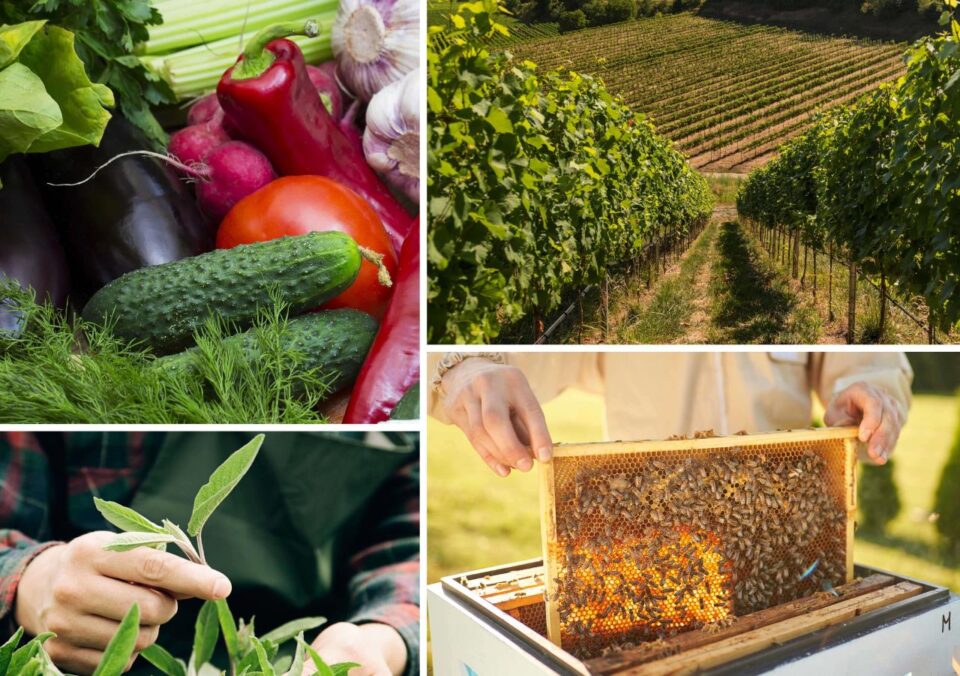GeoStat’s publication “Agriculture of Georgia” has been released on June 15. The publication covers the statistical metrics related to agriculture in Georgia for 2019-2022. EastFruit’s analysts provide several highlights from the data. Given the aging of farmers, a production that is mostly for own consumption, and high segmentation of the production, there might be significant opportunities in modern agriculture in Georgia.
Before we move on to the highlights, let’s clarify some of the key terms used in the publication:
- Agricultural holding (holding) – An economic unit engaged in agricultural production under single management without regard to its size and legal status. There are two types of agricultural holding: family holding and agricultural enterprise.
- Family holding – A holding operated by a household.
- Agricultural enterprise – A holding operated by a legal entity: limited liability company, general partnership, limited partnership, joint stock company, cooperative, etc.
With this classification in mind, we present you some of the key highlights we found throughout the agricultural data of Georgia.
Almost all holdings are led by farmers who are 40 years old or above. Men are using much more land on average.
Leaders of 94% of the agricultural holdings fall in the age group of “40+” in 2022. The share has been increasing each year during 2019-2022. It is worth noting that 92% of the land operated is operated by this group. Similarly, the group “ led by a 60+ year old” is the largest with 59% of agricultural holdings belonging to this group in 2022. An increasing tendency is also present in this group. The lowest share for the last four years was observed in 2019 (51%).
Of course, all of the above means that the share of younger leaders in agricultural holdings is low, and what may be worse is that the share is reducing over the years. For 2022, the share of the holdings led by 39-year-olds or less was only 6%. For the last four years, this share was the highest in 2019 (8%).
The majority of the leaders are men with 68% of agricultural holdings being led by men and 32% led by women. In terms of dynamics, these shares have been practically stable during 2019-2022. Interestingly, male leaders own or use much more land than females. 82% of the land is operated by holdings led by men. This share shows a tendency for growth – it was at 80% in 2019. For 2022, on average, a male holding leader owns or uses about two times more land than a holding led by a female.
Most farmers produce agricultural goods for their consumption.
Agricultural holdings oriented mainly on crop production constitute 57% of all agricultural holdings. 33% is focused on livestock production and crop production equally. Only 10% is mainly oriented on livestock.
For the agricultural holdings which report that they mainly produce crops, the purpose of production is mostly own consumption. The majority of the producers opt out of participating in the market. Also, there was a reduction in the share of producers more focused on selling their produce.
Share of holdings producing primarily for sale (selling 90% of own crops or more) – 5%, down from 8% in 2021. The growth trend of the previous 3 years has stopped. This share is almost at the minimum level of 2019-2022.
Share of holdings producing mainly for sale (selling more than 50% and up to 90%) – 8%, down from 13% in 2021. Share of such holdings is the lowest in 2022 in the last 4 years.
Share of holdings producing mainly for own consumption (selling more than 10% and up to 50%) – 14%, up from 12% in 2021. Throughout 2019-2022, the share was the highest in 2022.
Share of holdings producing primarily for own consumption (selling 10% or less) – 68%, up from 62% in 2021. The peak in the last four years was in 2019 – 70%.
Share of holdings with no agricultural production – 5%, highest in 2019-2022.
There are some slight differences in shares, but for the most part, dynamics are similar for the group of producers who focus on crop and livestock production equally. 62% of them produce primarily for their consumption.
Family holdings still have very high shares in production, but low income.
Family holdings produced 98% of potatoes, 92% of fruits, and 91% of vegetables in 2022. No significant changes are observed in these shares for the last 4 years. Shares were always about ±1% of 2022 levels throughout 2019-2022. Consequently, the shares of agricultural enterprises in production are very low.
The large share of family holdings can straightly lead to one key production issue. Georgian agriculture production is segmented into very small parts. Small sizes of production, mean there are no scale effects, which in their own way translate into low productivity of producers.
The average monthly income from selling agricultural products per household amounted to GEL90 ($31). This income was only 7% of the total household income. Over the last four years, there is a positive tendency in both mentioned metrics.
The use of the site materials is free if there is a direct and open for search engines hyperlink to a specific publication of the East-Fruit.com website.




